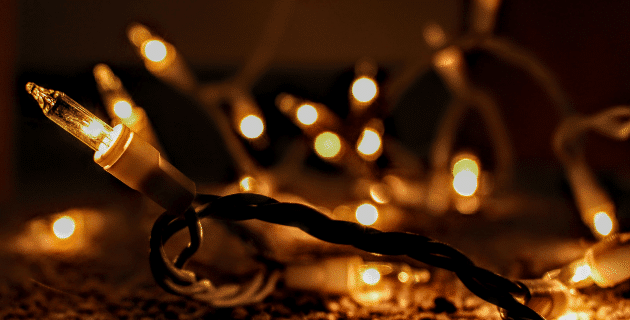It’s the holidays and if you’re like most Americans, you’re pulling out the extension cords. Whether you’re planning a fantastic holiday light display or you simply need to power an extra item or two, remember that safety is key.
Extension cords are responsible for about 3,300 home fires annually, including holiday fires, killing 50 and injuring 270 people each year, according to the Electrical Safety Foundation International. That’s why it’s important to know how to choose and use these cords safely.
Follow these tips for extension cord safety this holiday season.
When buying extension cords, consider these important factors.
-
- Select a cord that is approved by an independent testing lab such as Underwriters Laboratories (UL), Intertek (ETL), or CSA-International (CSA).
- Choose a cord with a 3-prong plug and if possible, a polarized one. Polarized plugs can only be inserted into an outlet one direction, because the blade on one side is wider than the other.
- If you’ll be using the cord outside, choose one marked for outdoor use. Outdoor extension cords have more insulation, which protects them from varying temperatures, sunlight, and unintentional scrapes.
- Select a cord that is long enough for your needs. Never plug an extension cord into another extension cord to extend it. That’s not safe.
- Know what you are powering and choose a cord that can provide the right load amount. If you buy one with insufficient power for your needs, you could overheat it and cause an electrical short or a fire.
- The thickness of the cord will be a clue to its power. Small appliances and electronics can use thin or flat cords. Larger ones need thick, round, low-gauge cords able to handle a higher amperage/watt flow. The amperage is the measure of electrical current flow. The wattage is the amount of electrical power of an appliance or lamp.
- Look at the label on the cord and match it to your electrical needs. If you’re unsure, ask for help from the retailer.
- Length makes a difference. The longer the cord, the more chance for voltage to drop. If you’re running a 50-foot cord, select a higher rating to account for that loss.
When using extension cords, remember these do’s and don’ts.
Don’t…
… power multiple appliances with one cord.
… remove the third prong from your plug to fit in a 2-prong outlet. That could open the way for a nasty electrical shock.
… run cords under rugs or furniture. If the heat has nowhere to escape, it could cause a fire
… tape cords to floors or attach them with staples or nails, which could compromise the wiring.
… bend or coil extension cords that are in use.
… put cords across highly trafficked areas. They can be a tripping hazard.
… plug extension cords into power strips that are then plugged into outlets. This presents a similar danger to plugging extension cords into other extension cords—and heightens the risk of a fire.
… don’t use extension cords with heaters or fans. The risk of overheating is too great.
… don’t use extension cords that feel hot to the touch.
Do…
… check for frays, loose wires, and other damage. If you see any, throw out the cord and use another.
… insert prongs fully so no part of the metal is exposed while the extension cord is in use.
… cover unused cord receptacles with childproof covers.
… keep pets away from extension cords. Spray the cord with Bitter Apple to discourage chewing.
… pull the plug – and not the cord — when disconnecting from the socket. Pulling the cord could damage the wire and also present a shock hazard.
… store cords indoors and throw away damaged cords.
Remember that extension cords are designed to be temporary. If you’re using them on a permanent basis, it may be time to update your home’s electrical system.
Finally…a word about power strips
Power strips add extra outlets when you need them. That doesn’t mean you should use every outlet in the strip. Just like extension cords, power strips have electrical load limits. Check the rating, and make sure your power strip includes a built-in surge protector. These protect from a spike in electric current that can damage your electronics or appliances.
The personal property coverage in your homeowner’s insurance may cover damages from a power surge or electrical fire. Check with your insurer.
This article is furnished by California Casualty, providing auto and home insurance to educators, law enforcement officers, firefighters, and nurses. Get a quote at 1.866.704.8614 or www.calcas.com.
- Graduation – When to Remove Your Child from Your Auto Policy - May 18, 2023
- How to Prevent Catalytic Converter Theft - May 17, 2023
- How Much Does Home Insurance Cost? - May 17, 2023

